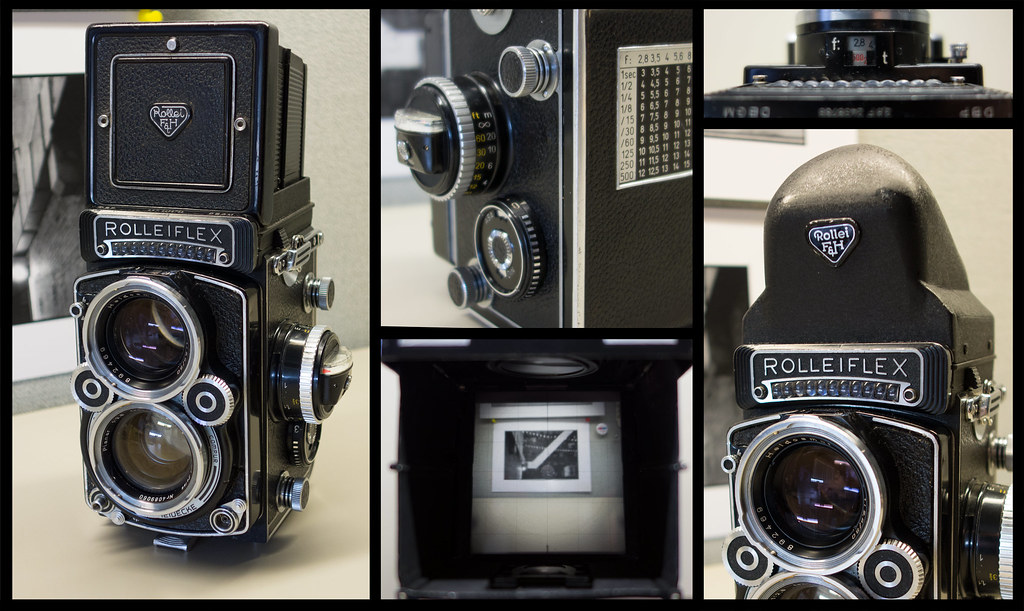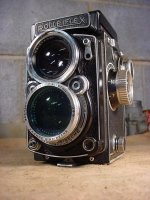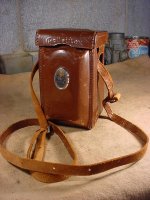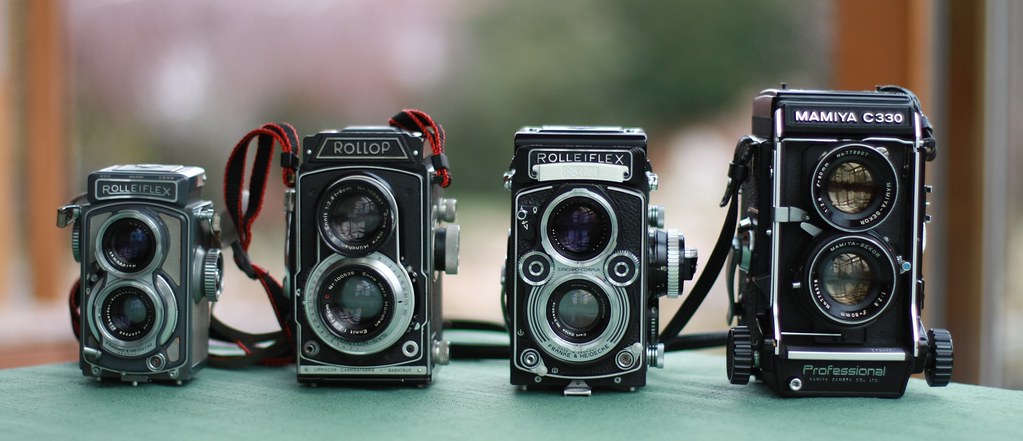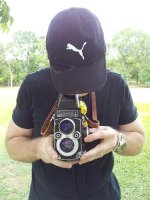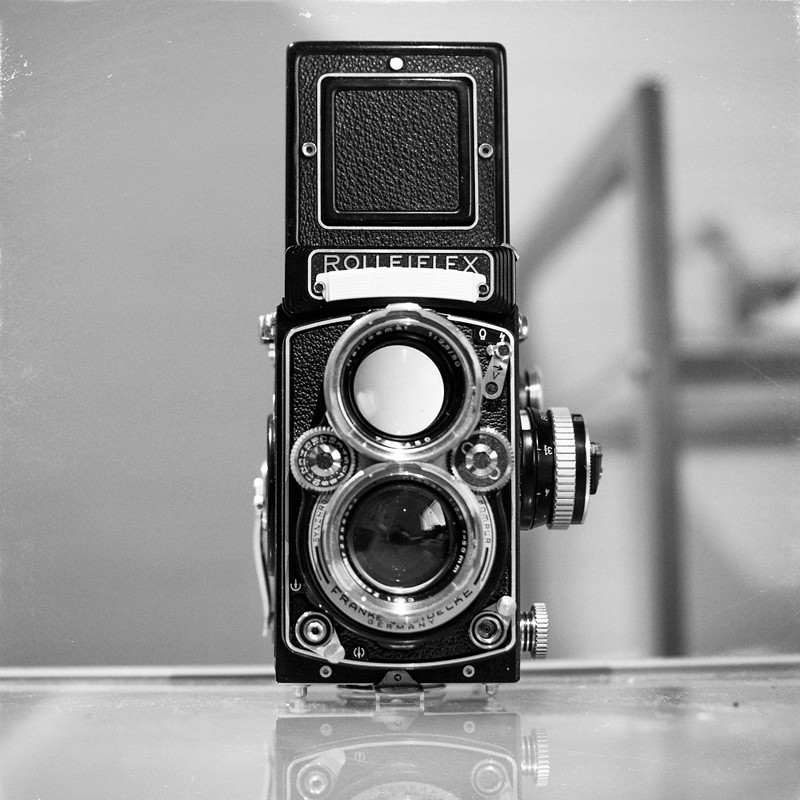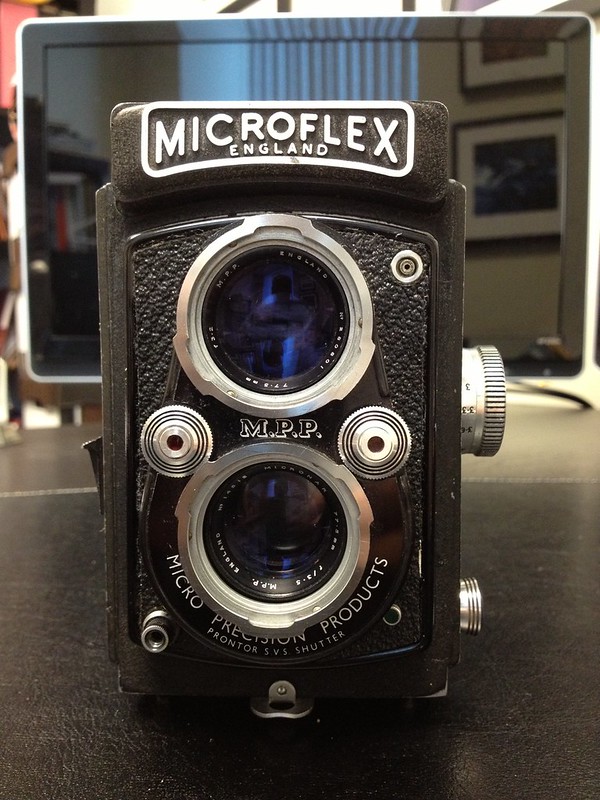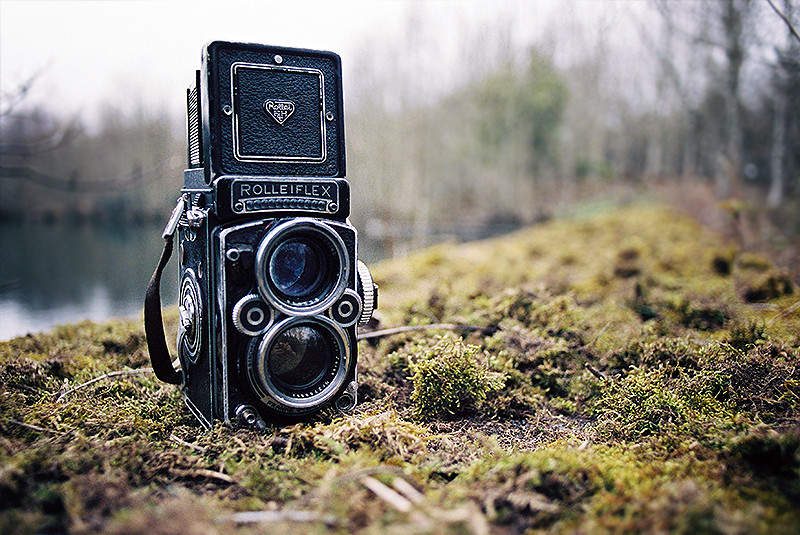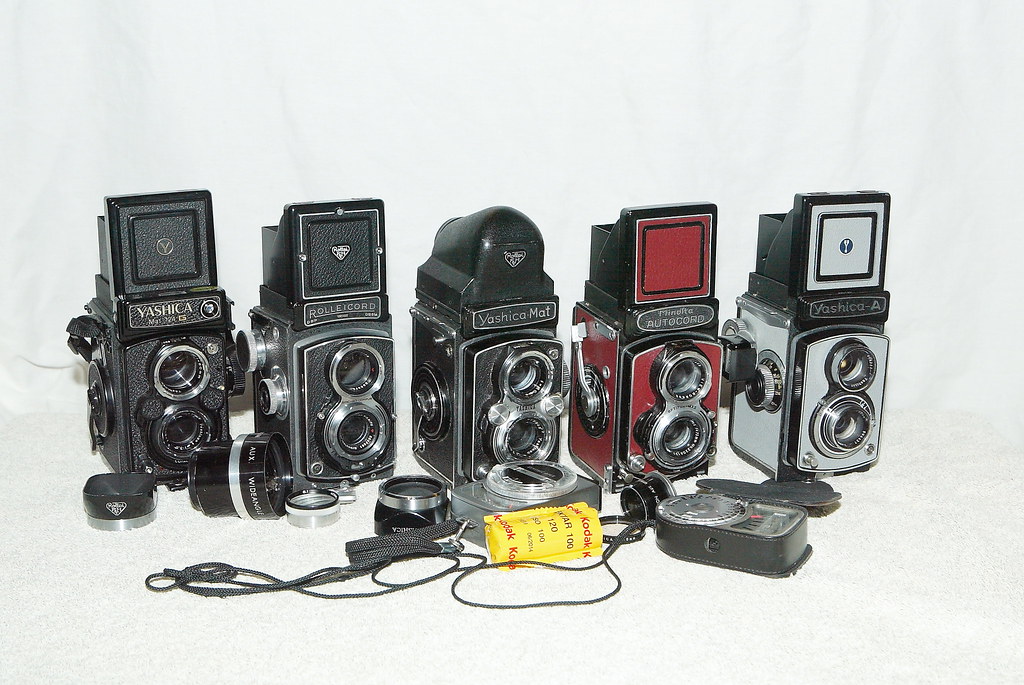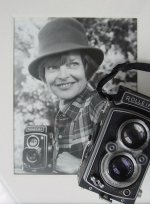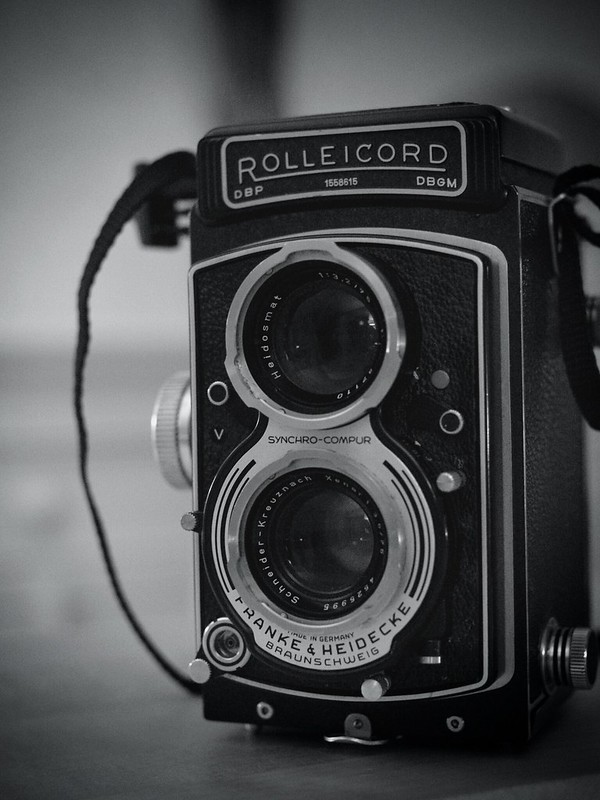The Rollop Automatic 2.8 from Lipca (Lippische Kamerawerke Barntrup)
It is a german TLR from the 1950s which was placed a bit below the Rolleiflex line from Franke & Heidecke.
It has a film transport leaver which is pushed down at an angle of about 90° to transport the film and cock the shutter which is a Prontos SVS with 1- 1/300s, X and M flash syncronisation. The taking lens is a Enna Ennit 80mm f/2.8 (Tessar type) which can be stopped down to f/22. The time wheel from the shutter reads the light value (EV).
The focusing is done the same way as the Rolleiflex (but the wheel moves in the other direction) and the minimum focus distance is 1m. It looks like it does parallax compensation via tilting the lens bord minimally, but I am not shure about this. The focusing screen shows a thin crosshair and is quite dim by modern standards, but quite usable in the daylight.
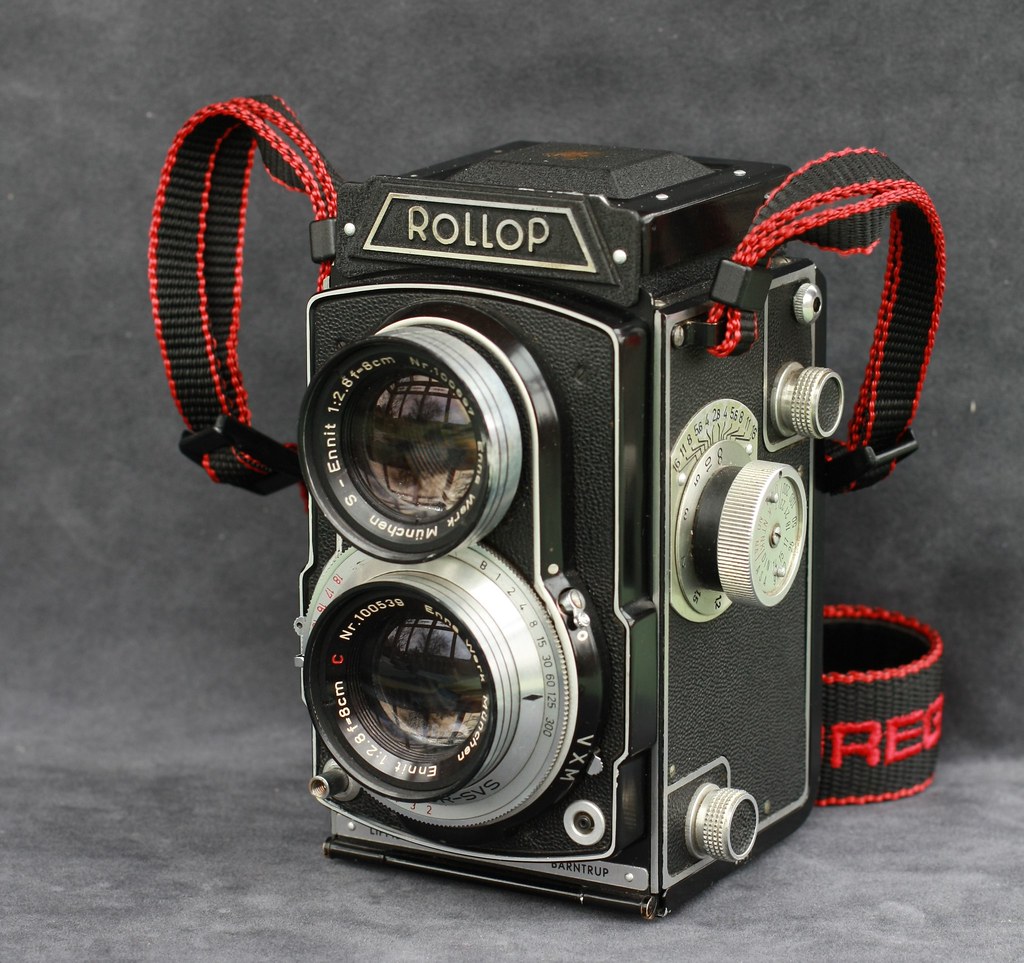 Rollop Automat 2.8
Rollop Automat 2.8 von
thomas.78 auf Flickr
This is my third real camera.
After my FED-2 and a Zorki Ie which I got at the age of 12, I was fascinated by the look of the TLR cameras. At our city there was a camera store which had several Rolleiflex (mostly 2.8 and 3.5 models) in their showcase but I could not afford them as a pupil (it was in 1991) - the price tag was always around 2000 DM (1000 €).
As a inexpensive alternative I first got a Seagull which I destroyed by abusing the film wind crank - as a child of 12 or 13 years without a camera manual...
Instead I got the Rollop Automatic (which I should use more often...)



